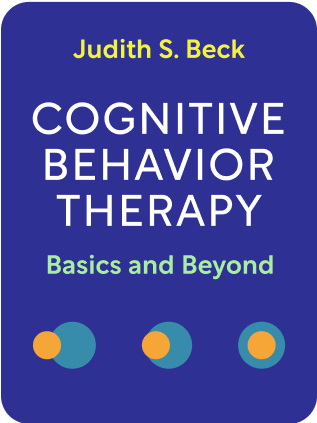

This article is an excerpt from the Shortform book guide to "Cognitive Behavior Therapy: Basics and Beyond" by Judith S. Beck. Shortform has the world's best summaries and analyses of books you should be reading.
Like this article? Sign up for a free trial here .
What are core beliefs in CBT? How are core beliefs formed? How can you correct negative core beliefs?
Core beliefs are central beliefs (positive or negative) that people hold about themselves and the world, often formed through early childhood experiences. Examples of negative core beliefs include “I am not good enough,” or “I am a failure.” Learning to manage negative core beliefs can help a patient navigate their lives with a more accurate viewpoint.
Learn how to deal with negative core beliefs below.
Identifying Negative Core Beliefs
What are core beliefs in CBT? Core beliefs are the central beliefs that people hold about themselves and the world. They are often formed at an early age. As with intermediate beliefs and automatic thoughts, they can be both positive and negative.
In mood disorders, negative core beliefs can be activated at all times, in contrast with “normally functioning” people, where negative core beliefs are activated only occasionally.
Negative Core beliefs tend to be categorized into three types:
- Helplessness
- “I want to achieve more, but I’m not capable of it.”
- “I’m vulnerable.”
- “I’m a victim.”
- “I’m a failure.”
- Unlovableness
- “I’m not worthy of being loved by others.”
- “I’m undesirable.”
- “I’m bound to be alone”
- “I’m defective, therefore others won’t love me.”
- Worthlessness
- “I’m bad. I’m fundamentally not worthy of good things.”
- “I’m evil.”
- “I don’t deserve to live.”
As you try to elucidate a patient’s negative core belief, try to categorize it into one of those three types. A statement that’s too general can be clarified to fit into the correct category.
- For example, the patient may offer the core belief, “I’m not good enough.” This can mean either “I’m not good enough to achieve more,” or “I’m not good enough to be loved.”
Core beliefs are often formed through early childhood experiences. To elucidate these experiences:
- When a patient recounts a recent situation that causes negative affect, ask her to vividly imagine the present situation to intensify the affect. Ask where she feels the affect in her body.
- Then ask when the earliest she can remember feeling this feeling in the past was.
Techniques to Correct Negative Core Beliefs
All the techniques used to address automatic thoughts and intermediate beliefs can also be applied to negative core beliefs.
In addition, here are techniques used particularly for core beliefs:
Set positively adjusted core beliefs, rather than extreme positive core beliefs:
- Turn “I can’t do anything right” into “I can do most things right, and there’s a good reason for when I get something wrong.”
- Do NOT turn it into “I can do everything right.”
Keep a Core Belief Worksheet with two columns:
- Evidence supporting new belief
- The patient may struggle to volunteer evidence for this, so have her reflect on other people doing the behavior. If the patient sees someone else doing something positive, ask whether she’s also doing it herself and should give herself credit. Or visualize someone else doing what she’s doing, and ask if she’s doing something similar.
- Any behavior that, if not done, would be negative data, belongs in positive data. For example, a struggling student might not consider going to class positive data, but if she didn’t go to class, she’d consider it negative data.
- Evidence that would have supported the old core belief, but a reframing makes it no longer as negative.
- “I got a B on the test, BUT this isn’t a total failure. If I were really incompetent, I wouldn’t be here.”
- “I didn’t understand something in class, BUT the teacher may not have explained it well, and I didn’t read about it.”
Historical tests of the Core Belief:
- Look back on major periods of the patient’s life to find evidence that supports or contradicts the core belief.
- Summarize each major period, often with reframings of the core belief to be more qualified.
- For example, “during high school, I was highly functioning. In college, I struggled more, but I still graduated and made it out.”
Role-play an early childhood experience:
- Rationally discuss alternative explanations for the experience.
- For example, say a patient’s mother yelled at her for poor grades, because the mom was embarrassed among her peers.
- The therapist role plays as the younger patient, but mounts a rational resistance against the traumatizer. The patient plays the role of the traumatizer (here, the parent). The roles switch.
- The patient then role plays as an older version of herself sitting beside her younger self. “What does older Annie say to 7-year-old Annie?” “7-year-old Annie, do you believe her?”
Note that negative core beliefs of patients with personality disorders are usually more difficult to modify.

———End of Preview———
Like what you just read? Read the rest of the world's best book summary and analysis of Judith S. Beck's "Cognitive Behavior Therapy: Basics and Beyond" at Shortform .
Here's what you'll find in our full Cognitive Behavior Therapy: Basics and Beyond summary :
- How to use CBT to overcome anxiety, sadness, anger, frustration, and stress
- How to address traumatic events earlier in your life, so that they have less hold on your thinking today
- The key ways to build rapport as a cognitive behavior therapist






